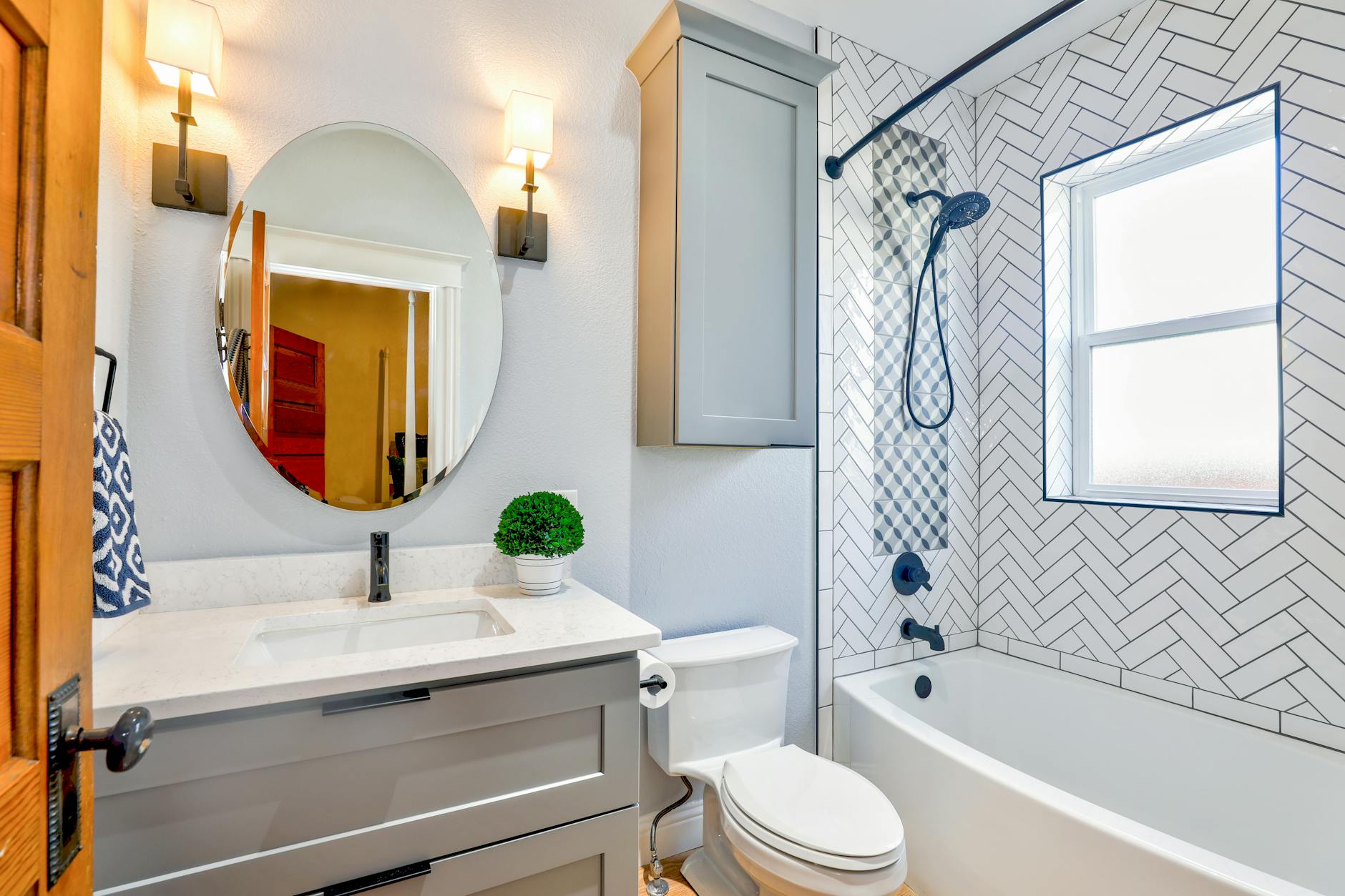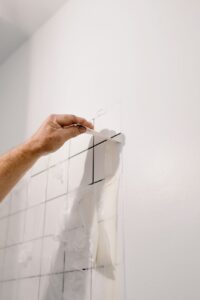The Art of Tiling in Dublin
The Importance of Tiling in Dublin’s Architecture
Tiling is not just a practical surface solution; in Dublin, it is an integral aspect of the city’s architectural identity. Tile work decorates the city’s edifices from the humblest homes to the grandest institutions, offering both durability and aesthetic appeal. In Dublin, professional tiling serves as a testament to the city’s rich cultural heritage, embodying a tradition of craftsmanship while providing functional benefits. Tiles are known for their longevity, resistance to the damp Irish climate, and ease of maintenance, which makes them a favored choice for both indoor and outdoor spaces. To understand how professional tiling can transform your Dublin interior design, it’s crucial to consider the role it plays in both preserving the past and embracing the future of design.
Historical Influence on Dublin Tiling Techniques
Dublin’s tiling techniques have evolved over centuries, with influences stemming from various historical periods and artistic movements. Victorian and Georgian tiles, often found in older buildings, reflect the ornate and intricate designs of their times. These classical styles have been preserved and continue to inspire contemporary tiling designs, showcasing patterns and motifs that have stood the test of time.
The craftsmanship of tiling in Dublin is deeply rooted in history, where skilled artisans would hand-craft each tile to create stunning mosaics and detailed flooring. This historical influence is evident in the city’s architectural landmarks and is preserved through restoration efforts.
For a closer look at how historical tiling techniques are being preserved and adapted today, consider exploring the importance of restoration and preservation in maintaining Dublin’s tiling heritage. Understanding the city’s tiling history not only enhances one’s appreciation for the art but also informs the selection of styles and methods for those looking to incorporate traditional Dublin tiling into their homes or commercial spaces.
Tiling Techniques in Dublin Homes
The tiling techniques used in Dublin homes are a blend of tradition and innovation, reflecting the city’s rich history and its contemporary design trends. Tiling is not just a practical aspect of construction; it is a form of expression that resonates with the aesthetic sensibilities of Dublin homeowners.
Traditional Tiling Methods Still in Use
In Dublin, traditional tiling methods have stood the test of time and continue to be employed by skilled artisans. These methods include hand-cutting tiles to ensure a perfect fit, using mortar bedding for installation, and employing intricate laying patterns that have been passed down through generations.
These time-honored techniques are particularly evident in the restoration of historic properties, where maintaining authenticity is key. Artisans adept at these traditional methods often work meticulously to reproduce historic patterns, contributing to the preservation of Dublin’s architectural heritage.
| Tiling Technique | Description | Application |
|---|---|---|
| Hand-Cutting Tiles | Custom shaping tiles for precise placement | Restoration of historic patterns |
| Mortar Bedding | Using a mortar mix for tile setting | Ensuring durability in high-traffic areas |
| Laying Patterns | Creating designs with tile placement | Heritage properties and bespoke designs |
For insights into how these traditional methods contribute to the character of Dublin homes, readers can explore can professional tiling transform your Dublin interior design?
Modern Innovations in Tiling
Moving from the conventional to the contemporary, modern innovations in tiling have revolutionized the way tiles are installed in Dublin homes. Advancements in adhesive technology allow for faster and more secure tile application, while laser cutting enables precision in tile shapes and sizes that was previously unattainable.
Digital printing technology has also made it possible to create tiles with customized designs, allowing homeowners to personalize their spaces like never before. Additionally, the use of sustainable materials and practices is becoming increasingly important, reflecting Dublin’s commitment to environmental responsibility.
| Innovation | Impact | Benefit |
|---|---|---|
| Adhesive Technology | Quicker installation and stronger hold | Efficiency and longevity |
| Laser Cutting | Precision in tile shapes and sizes | Customization and intricate designs |
| Digital Printing | Custom designs on tiles | Personalization and unique aesthetics |
| Sustainable Practices | Use of eco-friendly materials | Environmental conservation and health |
To further understand how modern tiling techniques can meet the demands of contemporary design, one may consider reading professional tiling in Dublin: solutions for design needs?
Dublin’s tiling landscape is a testament to the city’s ability to honor its past while embracing the future. Whether it is through preserving traditional craftsmanship or adopting innovative methods, Dublin continues to showcase a commitment to excellence in tiling techniques for homes.
Unique Tiling Materials and Patterns
Exploring Dublin’s rich tiling heritage reveals a diverse palette of materials and designs. These range from time-honored materials echoing the city’s architectural history to contemporary choices that cater to modern aesthetics. Homeowners and design professionals seeking to infuse their spaces with character can find inspiration in this variety.
Time-Honored Materials
Historically, Dublin’s tiling craftsmanship has been characterized by the use of classic materials such as ceramic, quarry tiles, and encaustic cement tiles. These materials have stood the test of time, not only for their durability but also for their distinctive patterns and colors.
Ceramic tiles have been a mainstay due to their versatility, coming in various glazes and intricate hand-painted designs. Quarry tiles, traditionally made from natural clay, add rustic charm and are known for their deep red hues. Meanwhile, encaustic cement tiles are recognized for their ornate patterns and the depth of color achieved through the use of mineral pigments.
Incorporating these traditional materials into contemporary Dublin homes offers a nod to the city’s past while providing enduring style.
| Material | Typical Use | Notable Characteristics |
|---|---|---|
| Ceramic | Floors, walls | Diverse patterns, easy maintenance |
| Quarry | Kitchen, patio | Natural look, robust |
| Encaustic Cement | Hallways, feature areas | Ornate designs, vibrant colors |
Contemporary Choices for Dublin Homes
Modern tiling choices in Dublin homes reflect current trends and technological advancements. Materials such as porcelain and glass are popular for their sleek appearance and low maintenance. Porcelain tiles are highly durable and come in a multitude of finishes that can mimic the look of natural stone, wood, or even fabric.
Glass tiles offer a translucent beauty that can make any space look more open and bright. Their reflective quality adds a touch of luxury and can be used to create stunning mosaics or as accent pieces within a larger tiling scheme.
Innovative printing techniques have also given rise to tiles with 3D textures and patterns, allowing for personalization and unique design statements in residential and commercial properties.
| Material | Typical Use | Notable Characteristics |
|---|---|---|
| Porcelain | High-traffic areas, bathrooms | Hard-wearing, versatile aesthetics |
| Glass | Backsplashes, accents | Light-enhancing, modern look |
| 3D Textured Tiles | Feature walls, artistic installations | Tactile, visually impactful |
These contemporary materials can transform a space, and when executed by skilled artisans, they contribute to the distinctive character of Dublin’s interiors. For insights into how these modern materials are implemented in Dublin homes, consider exploring can professional tiling transform your Dublin interior design? and what are the latest trends in professional tiling for Dublin construction?.
Dublin’s unique blend of historical and modern tiling materials and patterns offers endless possibilities for homeowners to express their style while respecting the city’s rich design heritage. Whether drawn to the classic charm of time-honored materials or the innovative appeal of contemporary options, Dublin’s tiling scene provides ample choice for creating stunning, personalized spaces.
The Professional Tiling Process
Tiling is an art that transforms the aesthetics of homes and commercial spaces. In Dublin, where the craft has been honed over centuries, the professional tiling process is a testament to the city’s commitment to quality and beauty. This section delves into the steps involved in professional tiling and the crucial role skilled artisans play in this intricate process.
Steps in the Tiling Process
The process of professional tiling is meticulous and requires precision at every step. It typically involves the following stages:
-
Planning and Design: This is where the vision for the space is conceptualized. It includes selecting the tile type, color, pattern, and layout that will best suit the area. During planning, considerations for waste, cut tiles, and pattern alignment are made.
-
Preparation of the Surface: Proper surface preparation is key to ensuring a long-lasting tile installation. The surface needs to be clean, level, dry, and free of any debris or substances that could interfere with adhesion.
-
Layout: Artisans measure and mark guidelines to ensure tiles are evenly spaced and the pattern aligns correctly with the room’s dimensions.
-
Adhesive Application: A suitable adhesive is evenly spread on the surface using a trowel. The type of adhesive is chosen based on the material of the tile and the surface it’s being applied to.
-
Tile Laying: Tiles are carefully placed onto the adhesive, firmly pressed, and tapped into place. Spacers are used to maintain even gaps between tiles for grout.
-
Cutting and Fitting: Tiles are cut to fit at the edges of the room and around fixtures using tile cutters or wet saws.
-
Grouting: Once the adhesive has set, grout is applied to fill the spaces between the tiles. Excess grout is removed, and the surface is polished.
-
Sealing: Depending on the type of tile, a sealant may be applied to protect the tile and grout from moisture and staining.
-
Inspection and Finishing Touches: The final step is a thorough inspection to ensure all tiles are securely fixed, the grout lines are even, and the finish meets the high standards of professional tiling.
The Role of Skilled Artisans
The role of skilled artisans in the tiling process is irreplaceable. These professionals bring years of experience, precision, and artistry to each project. They are adept at handling a variety of materials and patterns, ensuring that the tiles are not only functional but also contribute to the overall beauty of the space.
Craftsmen in Dublin are known for their unique ability to blend traditional techniques with modern innovations, creating tiling works that are both timeless and contemporary. They pay attention to the smallest details, from the consistency of the adhesive to the alignment of intricate patterns, which ultimately determines the quality and durability of the finished surface.
The expertise of these artisans is particularly crucial when working with materials that require special handling or when creating custom designs that reflect the homeowner’s personal style. Their knowledge and skills are essential in preserving the tiling heritage of Dublin while also pushing the boundaries of what can be achieved with tile work.
For further insight into how professional tiling can transform interiors, explore articles such as can professional tiling transform your Dublin interior design? and understand why skilled craftsmanship is vital to the process.
In conclusion, the professional tiling process is a blend of creativity and technical expertise. With the right artisan at the helm, tiling is not just a construction task but an opportunity to infuse Dublin homes with character and elegance. Whether it’s for a residential renovation or a commercial project, the importance of craftsmanship in tiling cannot be overstated. Discover more about the solutions professional tiling offers for various design needs by visiting professional tiling in Dublin: solutions for design needs?.
Custom Tiling Solutions for Dublin Homes
Within the dynamic world of home design, the bespoke touch offered through custom tiling solutions holds a special significance, particularly in Dublin. These personalized designs not only reflect the homeowner’s taste but also stand as a testament to the rich artistic heritage of the city.
Personalization in Tiling Designs
Personalization in tiling allows homeowners to express their individual style and bring a unique character to their living spaces. Custom tiling designs can range from intricate mosaic patterns inspired by Dublin’s historical landmarks to contemporary geometric shapes that echo the city’s modern architectural trends.
Homeowners can choose from an assortment of colors, textures, and finishes to create a custom look that complements their interior décor. Personalized tiling designs can be applied to various areas of the home, including kitchen backsplashes, bathroom walls, and entryway floors, making each space distinctive.
The process of selecting a custom tiling design often begins with a consultation with a professional tiling expert who can guide the homeowner through the myriad of options available. For more insights on transforming interior spaces, consider reading can professional tiling transform your Dublin interior design?
The Importance of Craftsmanship in Tiling
The craftsmanship involved in tiling is a crucial aspect that directly impacts the durability, appearance, and overall quality of the finished installation. Skilled artisans, with their expert knowledge and precision, play a pivotal role in bringing custom tiling designs to life.
These professionals employ a combination of traditional techniques and modern technologies to ensure that each tile is perfectly cut, aligned, and set. The meticulous attention to detail during the installation process is what sets professional tiling apart, making it a valuable investment for any Dublin home.
Craftsmanship in tiling not only ensures a beautiful result but also guarantees that the tiling will withstand the test of time, adding both aesthetic and monetary value to the property. Homeowners looking to delve deeper into this topic can explore how does professional tiling add value to Dublin homes?
In conclusion, custom tiling solutions offer Dublin homeowners the opportunity to infuse their homes with personalized elegance and enduring quality. The combination of individualized design and expert craftsmanship results in a tiling installation that is as unique as the city itself.
Preserving Dublin’s Tiling Heritage
Dublin’s rich history is often reflected in the intricate tiling found in its homes and public buildings. Preserving this heritage is crucial for maintaining the city’s architectural identity and charm.
The Importance of Restoration and Preservation
Tiling in Dublin is not only an aesthetic choice but also a historical record of craftsmanship and design trends that have evolved over centuries. Restoration and preservation efforts are vital for safeguarding this aspect of Dublin’s cultural heritage. They ensure that the unique tiling techniques, which have been passed down through generations, continue to adorn the cityscape and remain a source of pride for its residents.
The preservation of tiling in Dublin homes also contributes to the city’s tourism appeal, offering a glimpse into the past for visitors. By maintaining the original features of these historic properties, Dublin retains its authentic character and charm, which is a key attraction for tourists and history enthusiasts alike.
Challenges in Maintaining Tiling Heritage
Maintaining the integrity of Dublin’s tiling heritage presents several challenges. The primary issue is the wear and tear that these tiled surfaces endure over time, including the impact of weathering, pollution, and daily use. Identifying and sourcing authentic materials for repairs and restorations can be difficult, as many of the original techniques and materials are no longer commonly used or available.
Furthermore, there is a scarcity of skilled artisans with the expertise required to replicate the traditional tiling techniques. The meticulous nature of this work necessitates a high level of precision and understanding of historical methods, which are crucial for authentic restorations.
Another challenge is the financial aspect. Restoration projects can be costly, and securing funding is often a hurdle for property owners and preservation societies. The table below outlines estimated costs for common tiling restoration services in Dublin:
| Restoration Service | Estimated Cost (EUR) |
|---|---|
| Cleaning and Sealing | 150 – 300 |
| Repairing Cracked Tiles | 200 – 450 |
| Replacing Damaged Tiles | 250 – 500 |
| Full Restoration of Tiled Area | 1000 – 3000 |
Despite these challenges, the preservation of Dublin’s tiling is essential for maintaining the city’s architectural and cultural heritage. It requires a collaborative effort between homeowners, heritage organizations, local authorities, and skilled artisans. By valuing and investing in these unique professional tiling techniques, Dublin can continue to showcase its historic beauty and charm for generations to come.
To learn more about how professional tiling can transform interior design in Dublin, readers may explore articles such as can professional tiling transform your Dublin interior design? and other relevant topics such as why choose professional tiling for your Dublin commercial project?, which delve into the significance of skilled tiling work in various settings.




